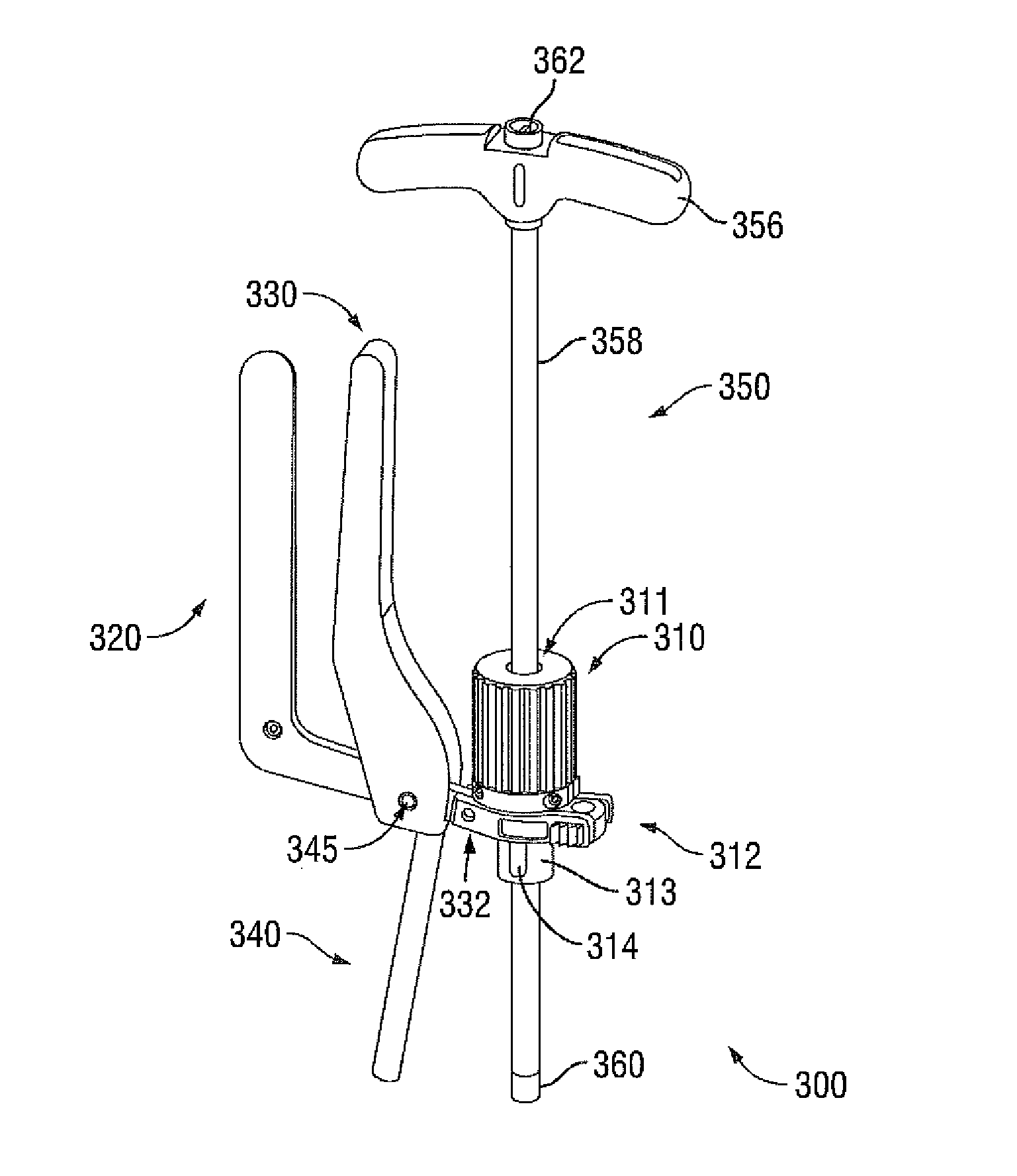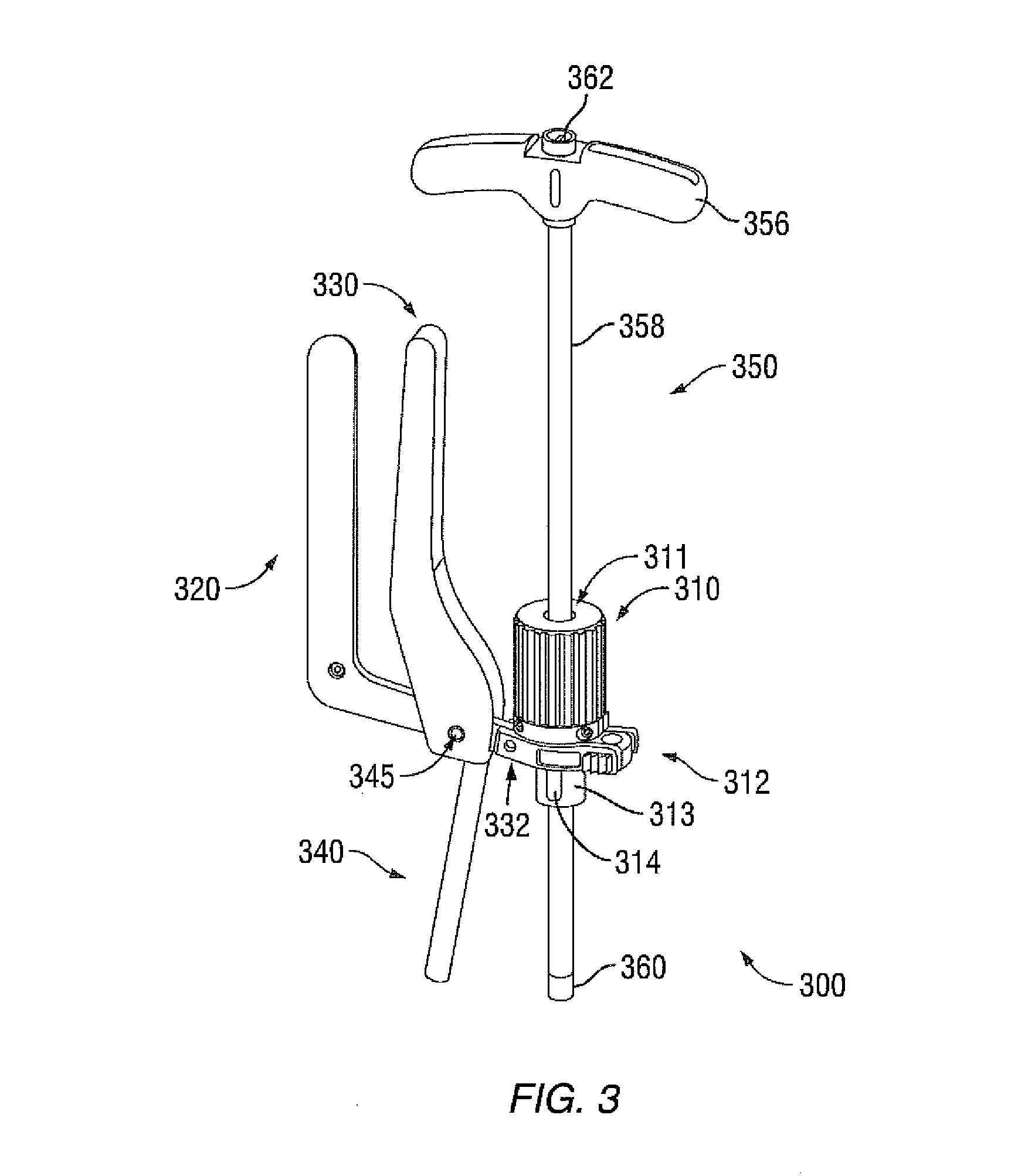Surgical instrument with integrated reduction and distraction mechanisms
a surgical instrument and distraction mechanism technology, applied in the field of spine surgery, can solve the problems of less efficiency, less accurate surgical results, and blockage of the surgical site, and achieve the effects of reducing the difficulty of spondylolisthesis, reducing the difficulty of surgery, and increasing the efficiency and accuracy of surgical steps
- Summary
- Abstract
- Description
- Claims
- Application Information
AI Technical Summary
Benefits of technology
Problems solved by technology
Method used
Image
Examples
Embodiment Construction
[0043]A surgical instrument for spinal stabilization systems and the various features and advantageous details thereof are explained more fully with reference to the non-limiting embodiments detailed in the following description. Descriptions of well known starting materials, manufacturing techniques, components and equipment are omitted so as not to unnecessarily obscure the invention in detail. Skilled artisans should understand, however, that the detailed description and the specific examples, while disclosing preferred embodiments of the invention, are given by way of illustration only and not by way of limitation. Various substitutions, modifications, and additions within the scope of the underlying inventive concept(s) will become apparent to those skilled in the art after reading this disclosure. Skilled artisans can also appreciate that the drawings disclosed herein are not necessarily drawn to scale.
[0044]As used herein, the terms “comprises,”“comprising,” includes, “includ...
PUM
 Login to View More
Login to View More Abstract
Description
Claims
Application Information
 Login to View More
Login to View More - R&D
- Intellectual Property
- Life Sciences
- Materials
- Tech Scout
- Unparalleled Data Quality
- Higher Quality Content
- 60% Fewer Hallucinations
Browse by: Latest US Patents, China's latest patents, Technical Efficacy Thesaurus, Application Domain, Technology Topic, Popular Technical Reports.
© 2025 PatSnap. All rights reserved.Legal|Privacy policy|Modern Slavery Act Transparency Statement|Sitemap|About US| Contact US: help@patsnap.com



